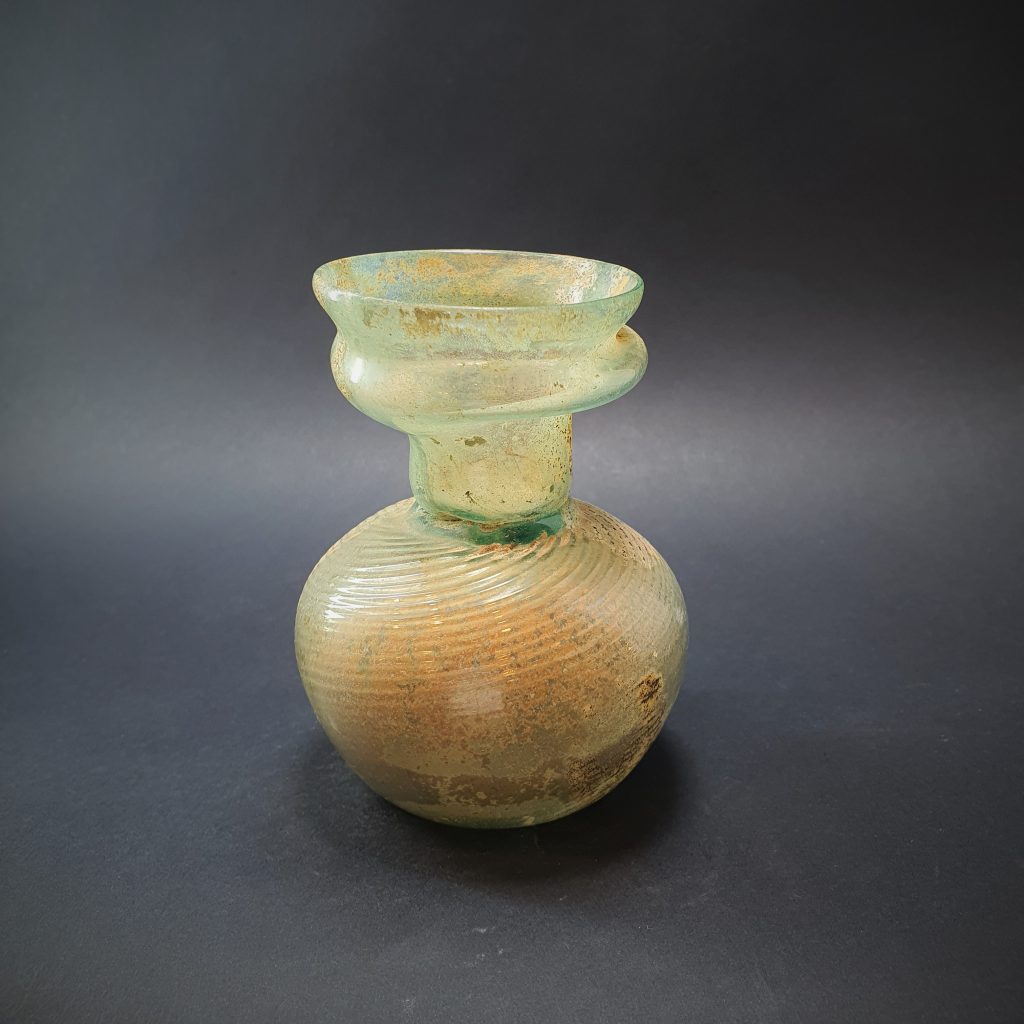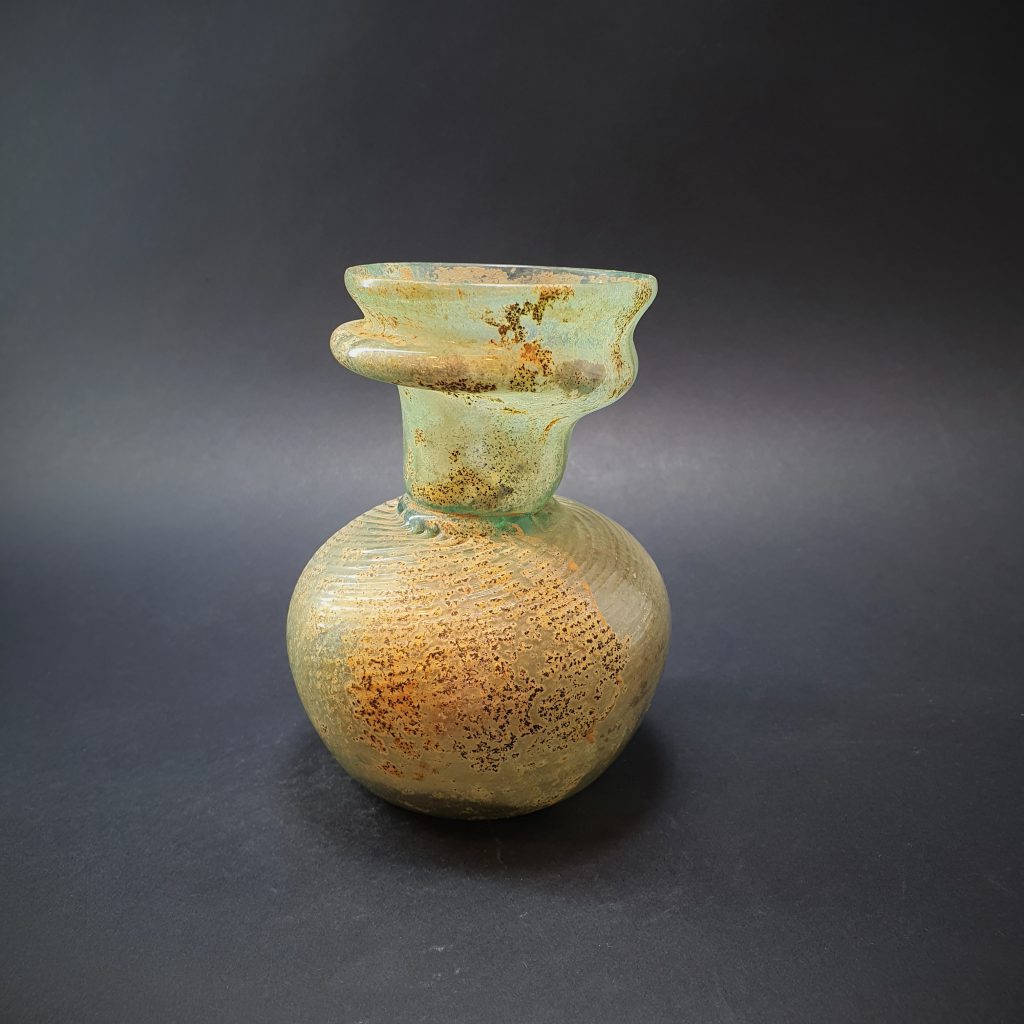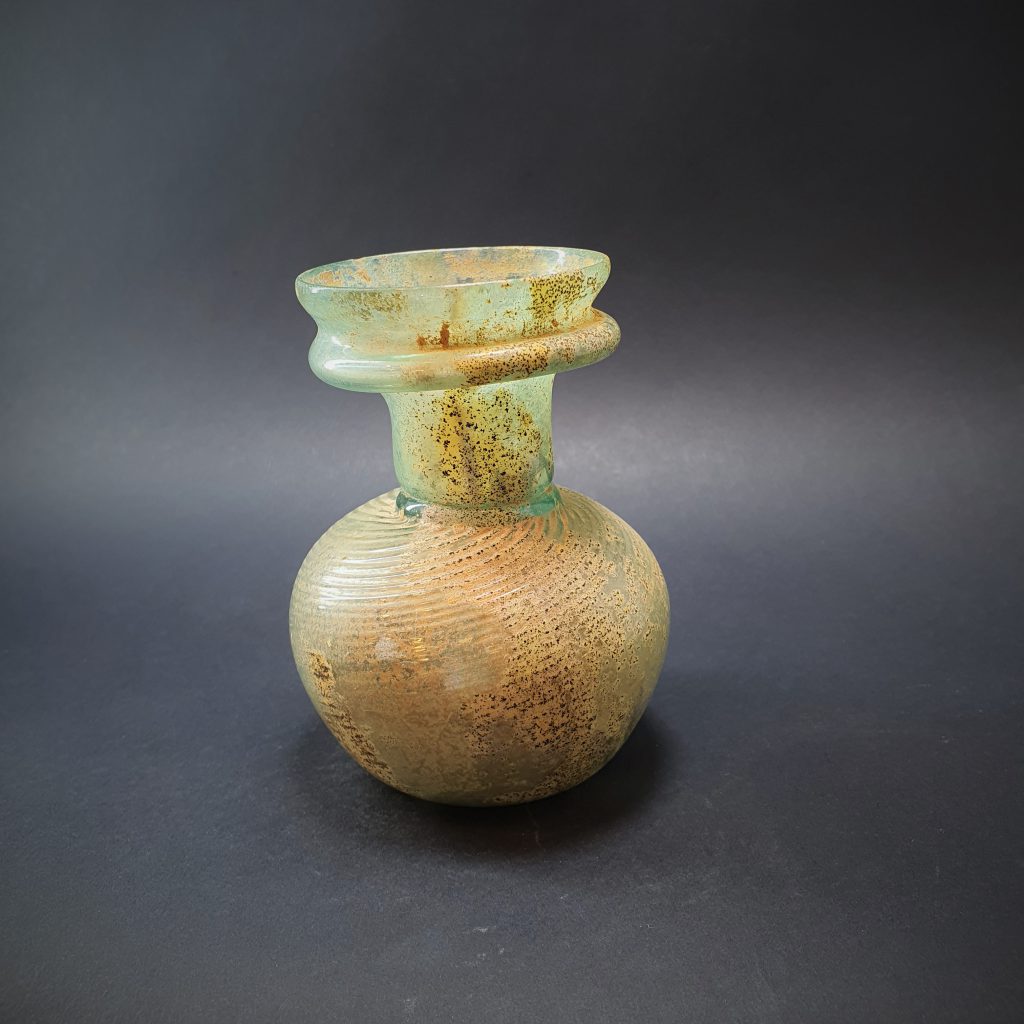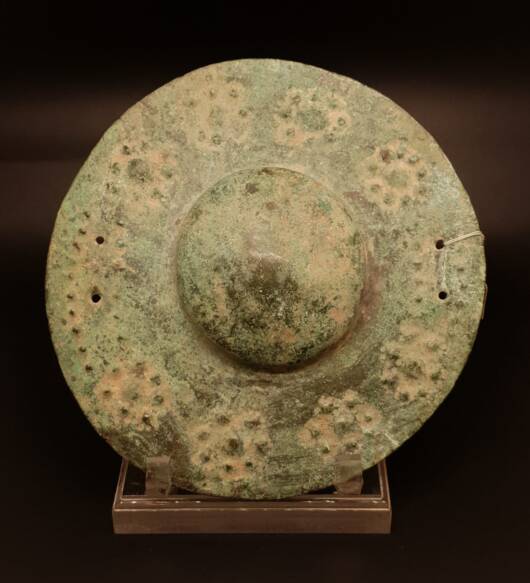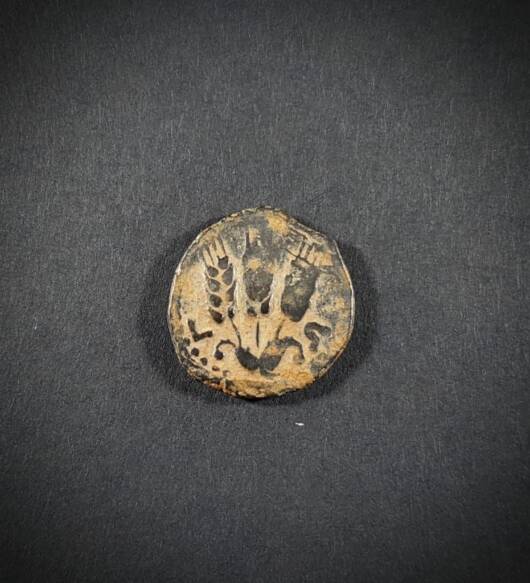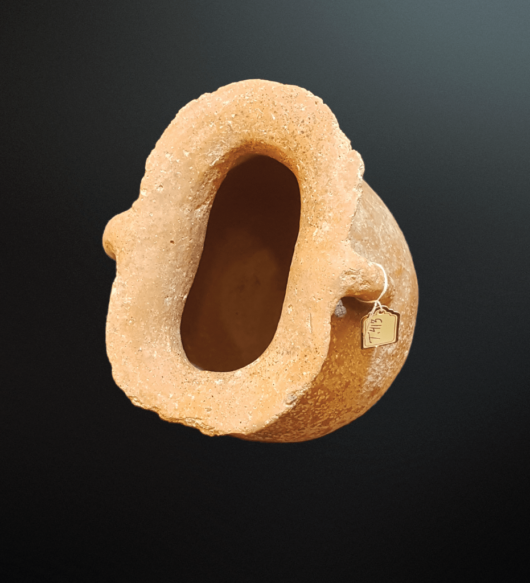Ancient Roman Glass Sprinkler
SKU: S.94.
Period: Roman Period.
Date: 4th Century AD.
Dimension: 10 cm.
Condition: intact.
Description
Description
Ancient Roman Glass Sprinkler, 4th century AD.
Vertical rounded rim with pushed-out open ridge below, cylindrical neck widening toward top and pushed in at bottom, forming diaphragm with a small aperture in its center, thick ring below diaphragm at junction with squat globular body, slightly concave base, pontil mark. Body blown in a mold with vertical ribbing; after its removal from mold, it was inflated further and rotated, resulting in delicate diagonal ribbing, which fades out gradually in lower section. Some cloudy weathering.
Condition: intact.
Ref: Yael Israeli, (2003) Ancient Glass in the Israel Museum, Page 226. #281.
Bagatti 1967, no. 61 | Boraas and horn 1973, pl. XIII: A
The sprinkler is a special kind of flask, in which the base of the neck is almost fully shut.
By Pushing the neck downward at the time of manufacture, the craftsmen caused the walls to fold inward in such a way that a barrier, or diaphragm, formed between the body and neck.
Through the small aperture remaining in the center of this diaphragm, the vessel could be filled or emptied of its contents, drop by drop.
This may be the vessel referred to by the rabbis in the phrase
“a flask whose brim is squashed inside it ” (Tosefta Miqva’ot 6 {7}: 22).
Sprinklers apparently held oil, perfume, and other costly liquids. Their decorations
include mold-blown patterns, elements pinched from the walls of the bubble or applied to it (such as snake threads), and even cut designs.
Many of the sprinklers in collections and the few provenanced examples are ascribed to
Syria or Jordan.
Ref. Ancient glass in the Israel museum (The Eliahu Dobkin collection and other gifts)
Page. 227


